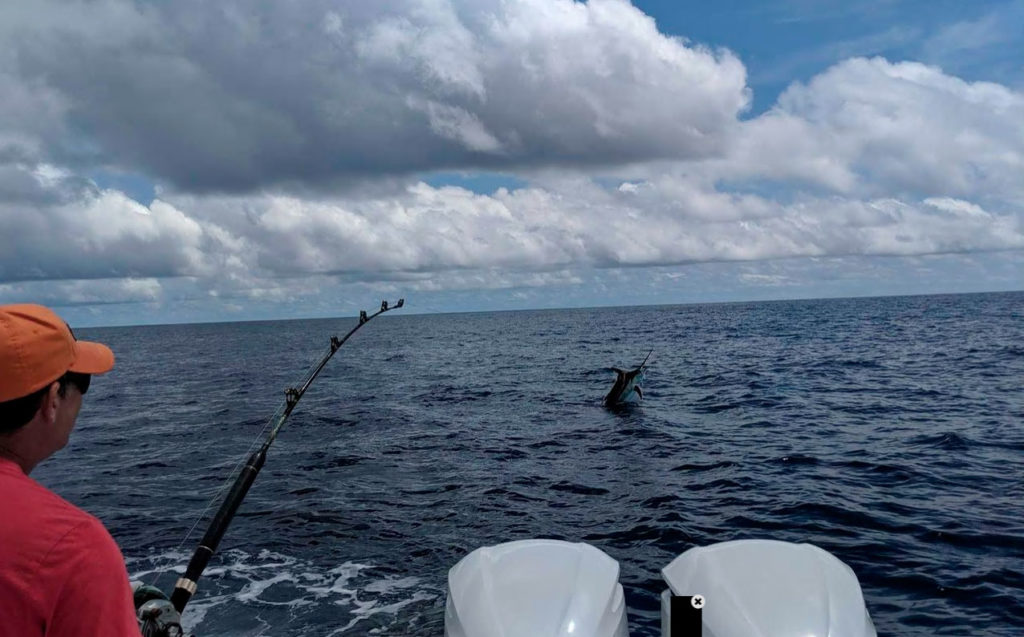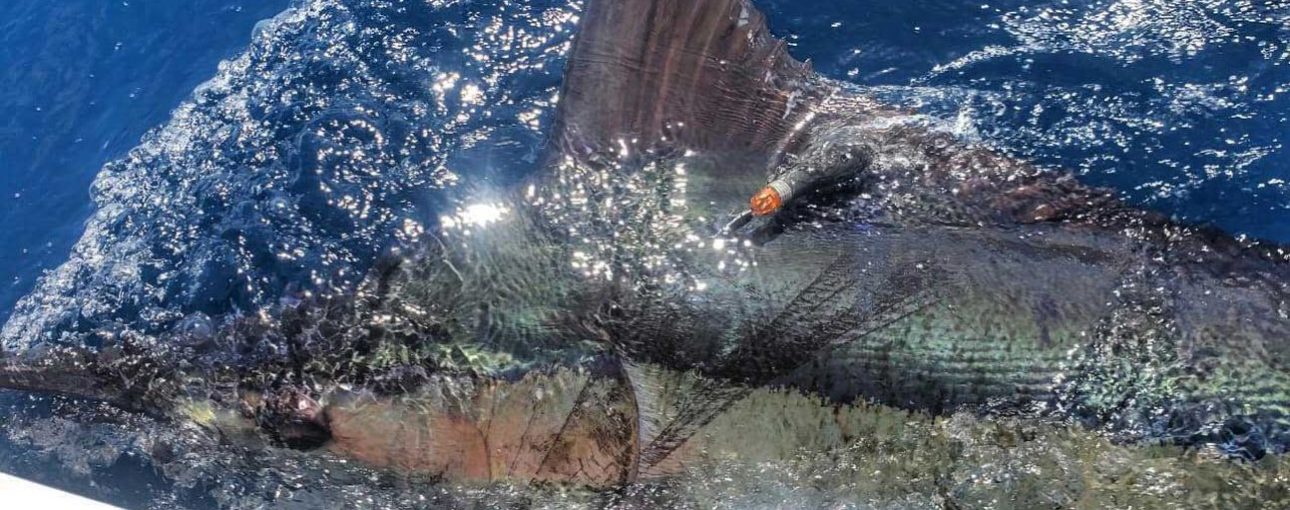Billfish-Tagging Project Successful with Blue Marlin off Costa Rica
A group of Stanford University researchers recently visited Zancudo Lodge in southern Costa Rica, deploying satellite tags on 22 blue marlin and 14 sailfish
By Dr. Danielle Haulsee
September 5, 2019
During the heart of southern Costa Rica’s rainy season, a team from Stanford University recently traveled to Zancudo as part of their billfish satellite tagging project, Project DynaMAR (Dynamic Marine Animal Research). Its goals are to better understand the movement and migrations of blue marlin and sailfish and how those movements are related to environmental and climate variables in the Central American Pacific Ocean. By better understanding environmental preferences and distribution patterns of these fish species, the team hopes to evaluate the various stressors (environmental and human-induced) that may be influencing these important top predators and highly-valued sportfish. By the end of the study, the team hopes to deploy up 100 tags between the two species, hopefully helping scientists to understand how the distribution of blue marlin and sailfish changes seasonally, as well as inter-annually.

Battling a blue marlin for tagging
Gregg Mufson battles a blue marlin as the Stanford researchers stand by with tagging equipment ready.Courtesy Zancudo Lodge
Zancudo Lodge, one of Costa Rica’s premier sport-fishing adventure resorts, graciously opened their doors to the researchers during the resort’s off-season, giving them access to fast and well-equipped Contender 32STs. These made it possible for them to reach their target fish, blue marlin, further offshore from the southern Costa Rican coast. The team included, Dr. Larry Crowder, Dr. Danielle Haulsee and Stanford PhD student Hannah Blondin. Dr. Haulsee and Ms. Blondin make up the core of the billfish tagging team and have deployed satellite tags on 22





















